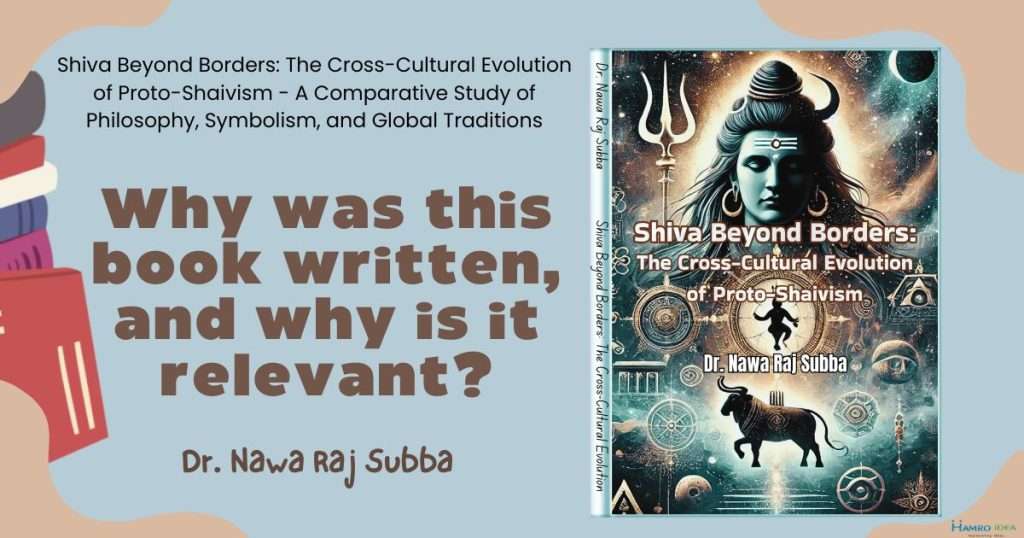Rationale of Study on Shiva
Beyond Borders:
Shiva Beyond Borders: The Cross-Cultural Evolution of Proto-Shaivism – A Comparative Study of Philosophy, Symbolism, and Global Traditions
Why was this book written, and why is it relevant?

Dr Nawa Raj Subba
Modern society sometimes limits religious and cultural discourses from regional perspectives. Still, a basic question has long driven me: “Is any religious concept really limited to a single geography or civilisation?” This question inspired me to investigate “Shiva”.
Philosophy
Shiva is a powerful idea, a portrayal of consciousness, not only a Hindu and Kirat god. Under many names and symbols, Shiva’s shapes, symbols, and ideas show up across many civilisations. While, in fact, Shiva’s traits span ancient Africa, Egypt, Mesopotamia, the Levant, and the Indus-Harappan civilisations, our knowledge of him has stayed limited within the Vedic and Puranic systems.
The primary goal of writing this book was to contribute to the restoration of Shiva’s standing as a type of “global cultural consciousness”. In this article, I have compared several civilisations, their symbols, archaeological data, rituals, gods, and the practices of yoga and meditation. By means of this, I hope to expose Shaiva philosophy’s strong intercultural impact.
This book will mostly help readers in three ways:
Philosophical and Symbolic Depth
Shaiva philosophy addresses more than just ceremonial observance. It reflects yoga, meditation, the triadic dynamic philosophy, and cosmic energy and awareness structure.
Evidence-Based Historical Enquiry: This work is based on real evidence, not mere speculation. From the Harappan seal to the Egyptian deity Min, the book provides a thorough comparative viewpoint for more research, including the Sumerian god Enki.
Modern Relevance
Shaiva philosophy can provide a road towards peace in the debate over religious pluralism nowadays. Knowing the global archetype of Shiva can help us determine the common connections among many religious systems.
I firmly believe that religions serve as many representations of a shared memory rather than being fundamentally in conflict. This book aims to assist readers in gaining that understanding.
Final Thought
Finally, academics, cultural historians, philosophical philosophers, symbolists, and those looking for coherence among spiritual traditions will locate great value in this work.
I provide my work to you all with regard for readers’ natural curiosity.


